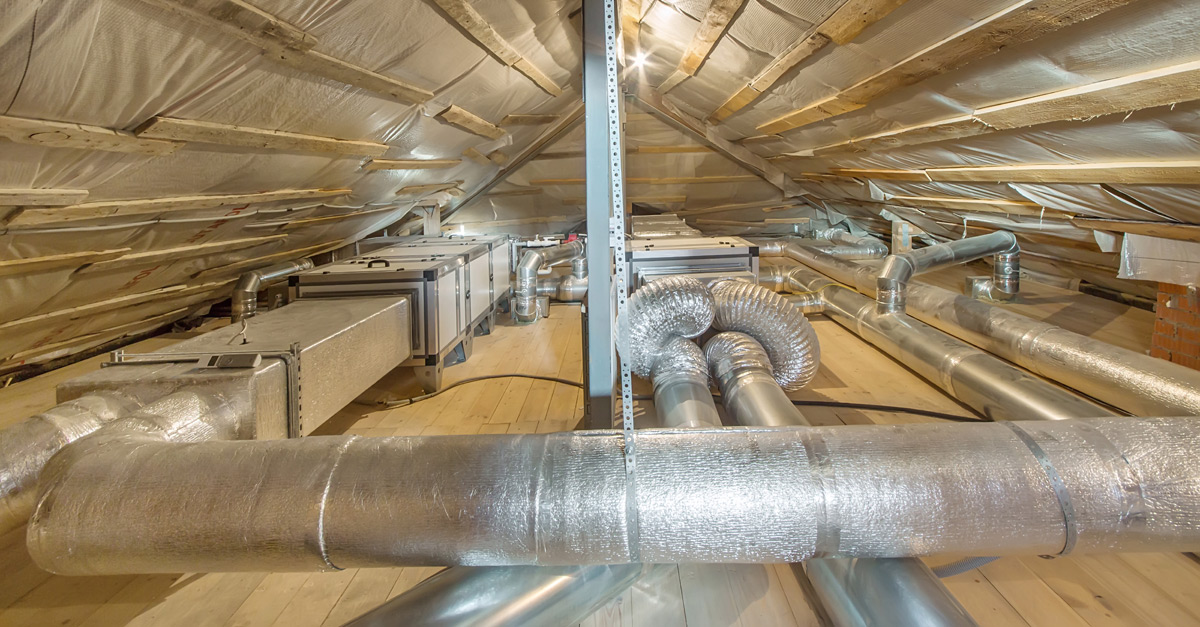Air Quality Improvements Provided by Ductwork Design
If you are renovating, remodeling or build a new home, you need to plan your HVAC system and its ductwork early in the process to avoid these costly mistakes. You can improve the current efficiency of your air conditioning system or you can provide the best possible running A/C system for your new home.
Before your architect completes the remodel/building plans, you need to plan your HVAC system and ductwork layout. A NATE-certified HVAC company can provide duct design to provide energy efficient ductwork design for your home.
Negative Results of Poor Ductwork Design
The average HVAC air conditioning duct system is about 60% efficient according to the U.S. Department of Energy. It is a high chance that the air flowing through your current HVAC system is not flowing efficiently. This lack of quality design can lead to:
- – Hot and cold spots, drafts, or stuffy pockets of non-moving air in your home
- – Unnecessary work on your air conditioner when the system runs longer than expected which leads to unwanted or frequent repairs
- – Poor air quality that can expose your family to increased contaminants such as dust, mold, mildew, excess humidity and buildup of pathogenic debris
- – Poor air flow that can cause odors to linger, create vacuums to shut doors by themselves, or increase mechanical noise in your home
Efficient ductwork design provides air flow for your HVAC system to properly operate and provide the comfort you desire from your living space. Here are five common ductwork design mistakes that can hamper your air conditioning system.
#1 Under Sizing
Many contractors fail to calculate the load requirements of the different rooms based on the size and type of air conditioning system you have. The size of ducts and number of ducts in a room needs specific design. IE, a larger living area with high ceiling will need larger and a higher number of vents that a smaller utility room. These factors affect the size of your ductwork.
#2 Ductwork Runs That Are Too Long
When there is a lack of planning of the duct system and the HVAC equipment, the air conditioning system may end up too far away from spaces that need to be cooled. Poor design may require long sections of ductwork to reach certain areas of your home. These long “runs” will make your A/C system not able to cool or heat those areas efficiently.
#3 Abrupt Corners or Bends
Bends in your ductwork that are too sharp or if there are too many corners will decrease the amount of air that will reach the ceiling vent. Think of your ductwork as a stream of water. The more direct, the more efficient it will flow.
#4 Leaking Ductwork
Air conditioning ductwork that is incorrectly sealed or supported can end up leaking cooled air into the walls where it won’t do any good to cooling your home.
#5 Lack of Air Returns
The air pressure and air movement must be balanced in your HVAC system. Your duct system needs return vents for air in the room to be pulled back into the HVAC system. Lack of the proper amount of returns is one of the most common ductwork design flaws in residential air conditioning design.
Doctor Cool & Professor Heat can help in designing your ductwork and air quality testing needs. Call today at 281-338-8751 or email Doctor Cool.

